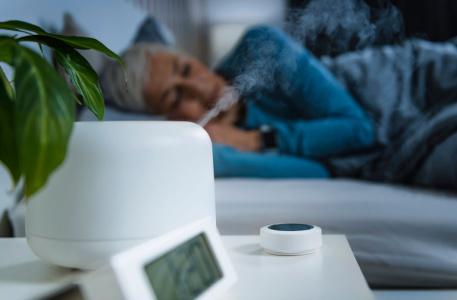
How to Add More Humidity to Your Home
Does winter weather leave your skin parched, your lips cracked, or your sinuses aching? Unfortunately, when cold spells strike, the thermometer isn’t the only thing that plunges—relative humidity levels can also dip to uncomfortable levels.
Your personal experiences with humidity can vary dramatically depending on where you live and the current weather conditions. And some people are more bothered by low (or high) humidity levels than others.
According to the U.S. Consumer Product Safety Commission, a 30 to 50 percent relative humidity is recommended for homes. However, if you don’t know your home’s current humidity level, inexpensive hygrometers (under $10) can be helpful for monitoring changes.
There are numerous benefits to boosting your home’s humidity during dry spells, including:
Greater comfort - Moisture can relieve itchy skin and irritated eyes and sinuses. Plus, when the relative humidity in your home is higher, you’re less likely to feel chilled.
Reduce heating costs - Since higher relative humidity levels feel warmer, keeping your thermostat lower is easier.
Protect your home - Wood flooring and furniture can develop hard-to-repair cracks if exposed to extensive dry conditions.
Prevent electrostatic shocks - Raising your home’s humidity levels can help prevent those annoying shocks that can occur when touching certain things.
How much are you bothered by dry air in your home? Is it a persistent problem or a short-term inconvenience? How much are you willing to invest in boosting your home’s humidity in terms of time and money?
Your answers can help guide you on the best ways to remedy the situation.
SIMPLE DIY STEPS
For minor, incremental improvements that won’t cost a dime (and might save a little money), try changing some of your daily routines:
Open your dishwasher door after a wash cycle and let your dishes air dry.
Hang your laundry to dry indoors instead of putting wet clothes in the dryer.
Open your bathroom door after bathing to release steamy air into other rooms.
Leave water containers open but elevated so they are less likely to be kicked or spilled accidentally, and pets and kids won’t get into them.
Simmer water in a tea kettle or a stock pot. Just be sure to turn off the burner before the water evaporates, and never leave it unattended.
Set your thermostat lower whenever possible since forced air heat increases evaporation rates and dries your home out faster.
BUY A HUMIDIFIER
Simple techniques never hurt, but they might not be adequate. To substantially impact your home’s humidity levels, you might need to invest in some equipment specifically designed for the job.
Portable units - A small room-size humidifier may be the perfect solution if you only need to boost humidity levels during a short but significant winter cold snap. They can be positioned wherever needed, such as bedside while you sleep. You’ll find numerous types, including cool mist, warm mist, evaporative, ultrasonic, and vaporizers.
Whole house consoles - Larger freestanding humidifiers can cover 2,500 square feet or more but tend to work best when all rooms are on one level. Some units mimic a piece of furniture. Whole house humidifiers require more water, which can mean larger (and heavier) tanks to refill or double tanks in one unit (which can make refills easier).
Integrated systems - Some humidifiers can be fully integrated into your HVAC system and use a dedicated water line. (No need to refill tanks!) Among integrated systems, steam humidifiers are the most powerful and expensive to purchase and operate. Alternately, less expensive evaporative units come in two versions—bypass and fan-based humidifiers.
COMPARING PRODUCTS
If you decide to buy a humidifier, here are a few vital factors to consider before making a purchase:
Coverage area - Does a humidifier adequately cover the space you need? Remember that integrated systems will reach every heated room, but whole house consoles will only impact rooms that are open to each other. (Doors must remain open.)
Installation and maintenance - The main advantage of portable and console units is that anyone can set them up. However, they do require hands-on maintenance to refill and clean periodically. On the other hand, integrated humidifiers must be installed professionally but are easy to maintain, typically requiring only the annual replacement of a pad, panel, or filter.
Controls - Does a humidifier offer all the features you want, including adjustable fan speeds and the ability to maintain your desired humidity level? Some models now include apps that can be integrated into smart home systems.
Noise - Variable fan speeds can also help control noise levels. However, noise isn’t an issue with most integrated systems since the humidifier is located in a remote area of your home with your HVAC system.
